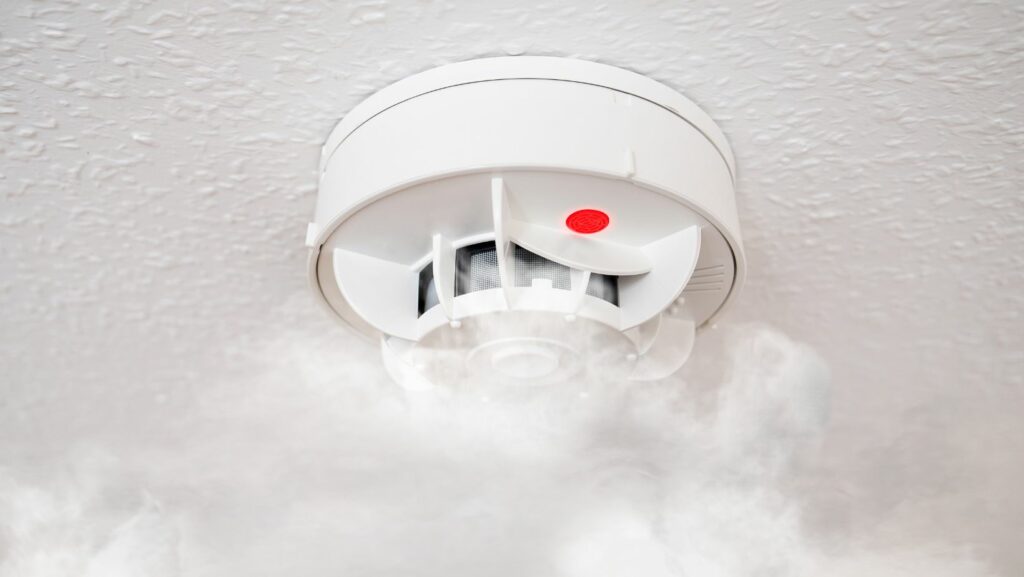Fire alarms are critical components of any safety strategy, providing early detection and warning in the event of a fire. Choosing the right type of fire alarm system can significantly impact how effectively you can respond to emergencies. We will explore various types of fire alarms new haven available today and help you understand which one might be most suitable for your specific needs.
Ionization Smoke Alarms
Ionization smoke alarms are designed to detect fast-burning fires that produce small smoke particles. They contain a small amount of radioactive material that ionizes the air inside the smoke detector’s chamber. When smoke enters the chamber, it disrupts the ion flow, triggering the alarm. These alarms are highly responsive to flaming fires and are suitable for areas where fires are likely to spread rapidly, such as kitchens, ensuring effective fire protection Los Angeles.
Photoelectric Smoke Alarms
Photoelectric smoke alarms operate by using a light source within the sensor chamber. When smoke enters the chamber, it scatters the light onto a photocell, triggering the alarm. These alarms are particularly effective at detecting smoldering fires that produce larger smoke particles, such as those from overheated wiring or smoldering mattresses. They are less likely to trigger false alarms from cooking vapors, making them suitable for bedrooms and living areas.
Heat Alarms
Heat alarms are designed to detect increases in temperature rather than smoke particles.

They are ideal for environments where smoke alarms may not be suitable, such as kitchens or garages where smoke and fumes are regularly present during everyday activities. Heat alarms detect fires that generate little smoke but significant heat, such as electrical fires or overheated appliances.
Combination Alarms
Combination alarms combine smoke detection capabilities with heat detection or carbon monoxide detection in a single unit. These versatile alarms provide comprehensive protection against multiple fire hazards and are often recommended for residential and commercial applications where different types of fires may occur. Combination alarms ensure early detection and timely alerts, enhancing safety in diverse environments.
Carbon Monoxide Alarms
While not strictly fire alarms, carbon monoxide (CO) alarms are crucial for detecting the presence of this odorless, colorless gas, which faulty heating systems, blocked chimneys, or malfunctioning appliances can produce. CO alarms are essential in homes with fuel-burning appliances or attached garages, where carbon monoxide buildup can occur silently and pose serious health risks.
Wireless Fire Alarms
Wireless fire alarm systems utilize radio frequency signals to communicate between the detectors and the central control panel, eliminating the need for extensive wiring. These systems are highly flexible and easier to install in new and existing buildings without significant disruption. They are particularly advantageous in retrofitting older structures or buildings where traditional wired systems may need to be more practical and costly.
Addressable Fire Alarm Systems
Addressable fire alarm systems offer advanced features by assigning a unique address to each detector and device connected to the system. This allows for precise identification of the location where an alarm has been triggered, facilitating quicker response times and more efficient evacuation procedures. Addressable systems are commonly used in large commercial buildings, hospitals, and industrial facilities where pinpoint accuracy and detailed monitoring are critical for safety management.
Smart Fire Alarms
Smart fire alarms integrate with home automation systems and can be monitored and controlled remotely via smartphone apps or other devices connected to the internet.

These alarms provide real-time alerts and notifications to homeowners or facility managers, offering peace of mind and enhanced emergency responsiveness. Some smart fire alarms include features like voice alerts, self-testing capabilities, and integration with other smart devices for comprehensive home or building automation.
Maintenance and Testing
Regardless of the type of fire alarm system chosen, regular maintenance and testing are essential to ensure reliable operation. This includes periodic inspections, cleaning of detectors, and testing of alarm functions according to manufacturer guidelines and local regulations. Batteries should be checked and replaced to prevent system failures during emergencies. Additionally, it’s crucial to educate occupants or employees about the alarm system’s operation and evacuation procedures to maximize safety and readiness during a fire. Proper maintenance not only extends the lifespan of the fire alarm system but also enhances its effectiveness in providing early detection and warning, thereby minimizing potential damage and ensuring swift evacuation when necessary.
The choice of fire alarm system should be based on a careful assessment of your specific needs, the nature of the environment, and the potential fire risks present. Whether opting for ionization, photoelectric, heat alarms, or a combination thereof, each type offers unique advantages in detecting different types of fires. Additionally, newer technologies such as wireless, addressable, and smart fire alarm systems can enhance safety by improving installation flexibility, response times, and monitoring capabilities. Investing in the right fire alarm system tailored to your requirements can effectively safeguard lives and property against the devastating impact of fires and related emergencies.


More Stories
Why Allergy Sufferer Needs an Air Purifier at Home: Improve Your Well-Being
Minimalist Interior Design Ideas for Small Student Apartments
The Permit Advantage: How Residential Building Permits Protect Your Investment